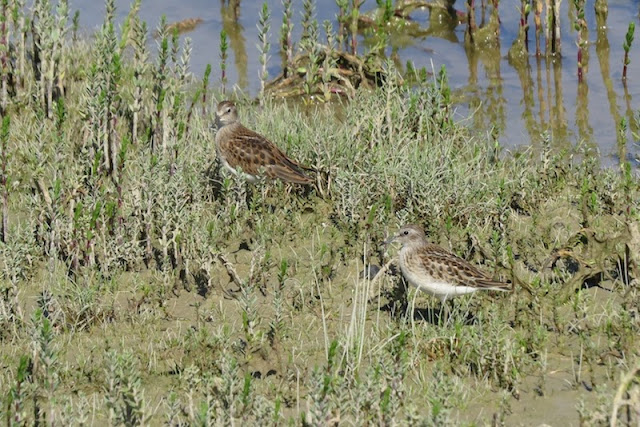Least Sandpiper (LESA)
By the time my group got there 80% or more of the Least Sandpipers were juveniles. On our second day, Ross and I observed 2 juveniles standing side-by-side that looked noticeably different:
Both of these LESAs are juveniles, but the one on the right is much paler. The one on the left, is, in my opinion, a typical looking LESA. The paler one seems to be at the extreme end of 'expected' variation, and may even be pale enough to be considered slightly leucistic. What are your thoughts?
Semipalmated Sandpipers (SESAs) often flocked together:
Over the course of my 2 weeks, I observed 3 SESA's that stood out because of the amount of red colouring near the base of their bill. The redness of all 3 individuals was limited to this area which is a good indication that they were eating in mud that stained their faces a different colour. I wonder why only 3 of them had this stain?
Adult SESA with unusual red/brown stain
Juvenile SESAs were generally tamer, were in smaller flocks, and fed further inland than the adults.
White-rumped Sandpipers (WRSA) were also abundant. We saw no juveniles, which isn't a surprise. The adults that we saw displayed the whole range from breeding to winter plumages. This individual is fairly advanced into its basic plumage: it has replaced its mantle, scapular, and some of its wing covert feathers.
The WRSA's tended to be more common in the rocky areas.
Adult SESA on the left, adult WRSA on the right:
Juvenile Bonaparte's Gulls were seen everyday:
Barb and I saw a wolf that came fairly close:
We also saw Black Bears almost daily - this one was fairly close to our favoured strawberry patch:










